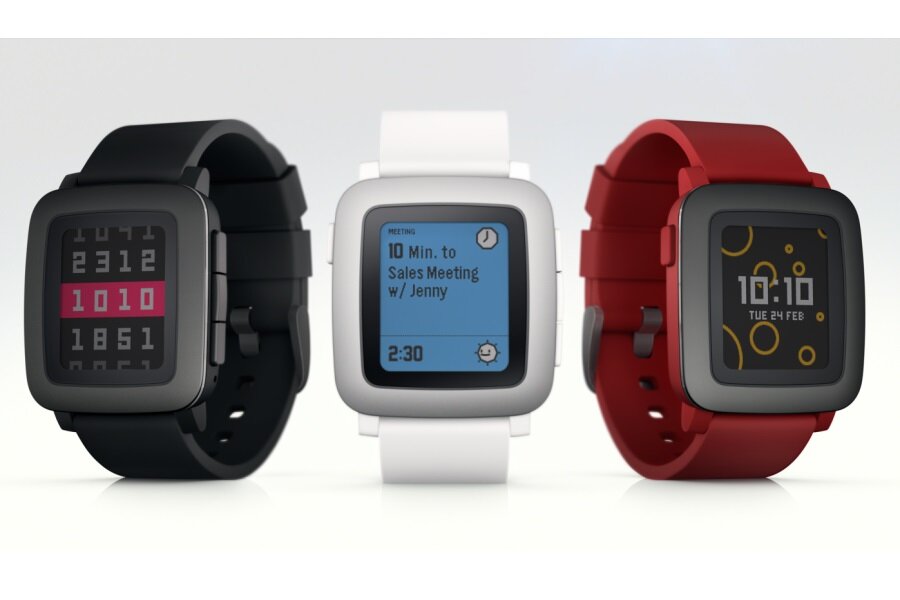Pebble returns to Kickstarter with full-color smart watch
Loading...
When the first Pebble smart watch hit crowdfunding site Kickstarter in 2012, it raised more than $10.2 million in just over a month – at the time, the most money any Kickstarter campaign had ever raised.
More than a million Pebble watches have been sold since they went on sale in 2013. Now the company is back on Kickstarter for round two, with a redesigned smart watch that features a color e-paper screen, an embedded microphone, and a battery that lasts up to seven days.
The Pebble Time, billed as an “awesome smartwatch [with] no compromises,” achieved its relatively modest funding goal of $500,000 almost instantly – by noon on Tuesday, the day the campaign was posted, nearly 20,000 people had donated and more than $4 million had been raised.
The Pebble Time will be a hair under 0.4 inches thick, with a slightly curved case, and will feature a new operating system that the company calls a “timeline interface.” The OS collates alerts from multiple applications and lays them out chronologically, and the Pebble Time has three buttons that let the user view past notifications (such as unread e-mails), the current time and date, or upcoming appointments and alarms.
“Your notifications, news, reminders and events are laid out chronologically,” the company says, “instead of being trapped inside separate apps.”
The watch’s built-in microphone will let users dictate replies to incoming e-mails and texts. Since the Pebble Time doesn’t have its own data connection, it pairs with a smart phone to receive notifications. Android users can dictate replies to messages received by Facebook, Whatsapp, Gmail, Google Hangouts, and most other Android apps. Apple iOS users can only dictate replies to Gmail messages right now, but Pebble says it’s working to integrate voice into more apps.
Like its predecessor, the Pebble Time has an e-paper screen that mimics the look of print on a page. The original Pebble’s screen was black-and-white, but the Pebble Time’s screen will be full color and a bit wider than before. An e-paper screen isn’t backlit like the LED displays found on smart phones, and while the Pebble Time’s screen won’t be touch-sensitive (the watch is controlled entirely with the three buttons on the side of the case) it will have excellent battery life compared to competitors such as the LG G Watch R and the upcoming Apple Watch.
The Pebble Time will retail for $199, though the company hasn’t said when it will be available.








